Understanding the Link Between Autism and Epilepsy
Exploring the Overlap: Autism and Epilepsy

Unraveling the Connection Between Two Complex Neurological Conditions
Autism Spectrum Disorder (ASD) and epilepsy are two prevalent neurodevelopmental disorders that often co-occur, sharing biological, genetic, and environmental underpinnings. Understanding the link between them is crucial for diagnosis, management, and improving quality of life. This article delves into their prevalence, underlying mechanisms, clinical features, and approaches to treatment, emphasizing the importance of early detection and personalized care.
Prevalence and Epidemiology of Autism and Epilepsy
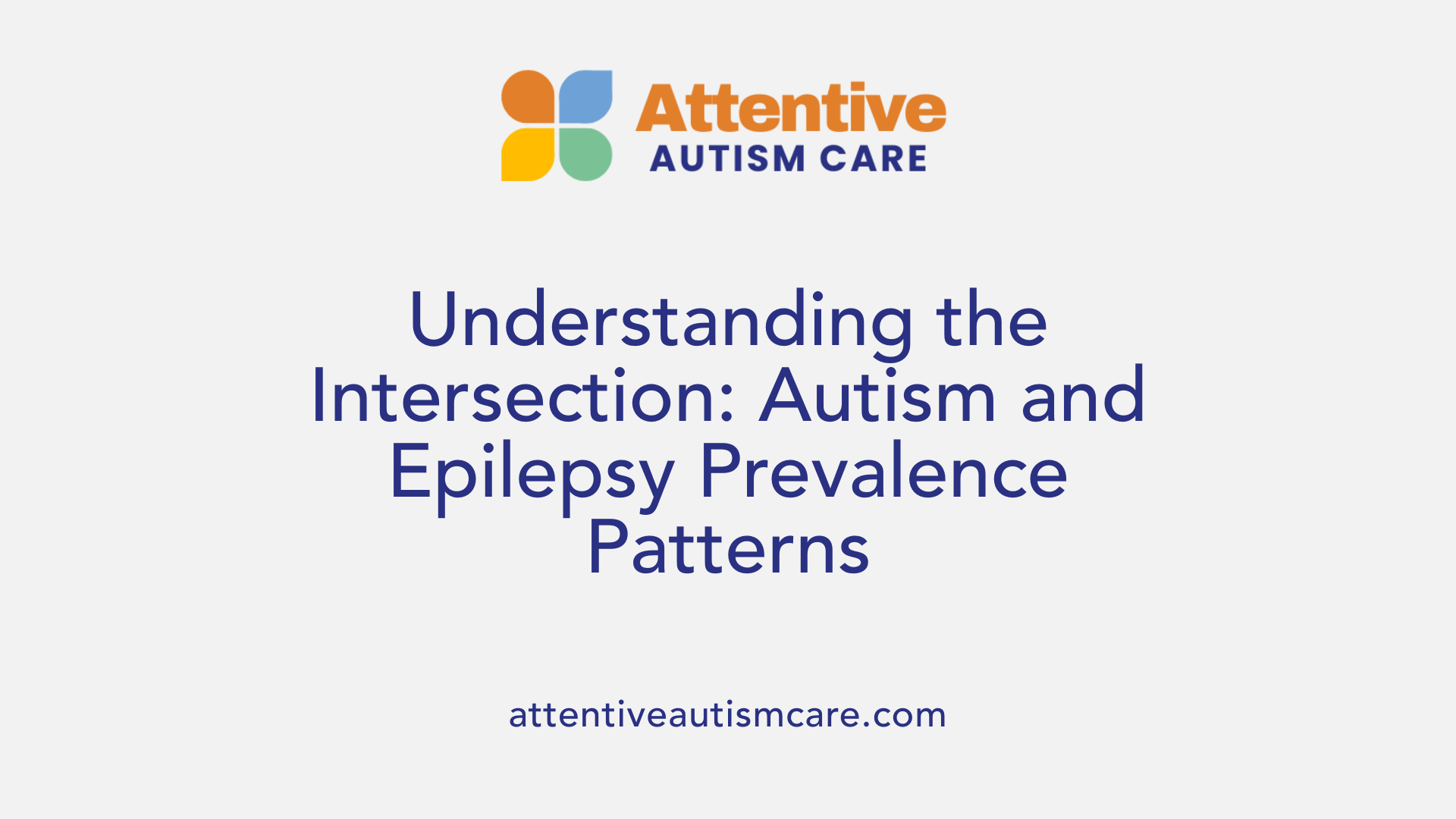 The overlap between autism and epilepsy is a significant concern within the neurological and developmental communities. Research shows that approximately 12% of individuals with autism also have epilepsy, with this figure increasing with age and severity of impairment.
The overlap between autism and epilepsy is a significant concern within the neurological and developmental communities. Research shows that approximately 12% of individuals with autism also have epilepsy, with this figure increasing with age and severity of impairment.
The frequency of co-occurrence varies widely depending on the population studied and the diagnostic criteria used. Estimates suggest a range from about 4.7% up to 28.6%. This variability is partly due to differences in study methodology, such as whether syndromic cases like tuberous sclerosis or fragile X syndrome are included.
Age plays a crucial role in the appearance of epilepsy in autistic individuals. It is common to see peaks of seizure onset during infancy and again during adolescence. Specifically, early childhood and teenage years are high-risk periods for developing epilepsy among those with autism.
The presence of intellectual disability further influences prevalence rates. Children with autism and intellectual disability are more likely to develop epilepsy, with rates reaching around 21.5%. Conversely, in autistic children without intellectual impairments, the risk is approximately 8%. Among those with severe intellectual disabilities, the rate can rise as high as 40%, underscoring the importance of monitoring cognitive development.
Gender differences also emerge, with autistic females with epilepsy seemingly at a higher risk than males. This highlights the necessity of tailored screening strategies across different demographic groups.
Overall, these data emphasize the significant overlap between autism and epilepsy, particularly in older children and teens, and among individuals with intellectual disabilities. Recognizing and monitoring this co-occurrence enables earlier intervention and better management of both conditions.
| Aspect | Prevalence Estimates | Notes |
|---|---|---|
| Autism with epilepsy | ~12% | Higher in older children and those with intellectual disability |
| Epilepsy among autistic children | 8% to 21.5% | Increased risk with severity of cognitive impairment |
| Overall co-occurrence | 4.7% to 28.6% | Varies by population and criteria |
| Gender differences | Higher in females | Among those with epilepsy and autism |
| Age-related peaks | Infancy & adolescence | Critical periods for seizure onset |
Understanding these epidemiological patterns is crucial for clinicians, educators, and caregivers to implement appropriate screening, early detection, and intervention strategies.
Clinical Features and Seizure Manifestations in Autism
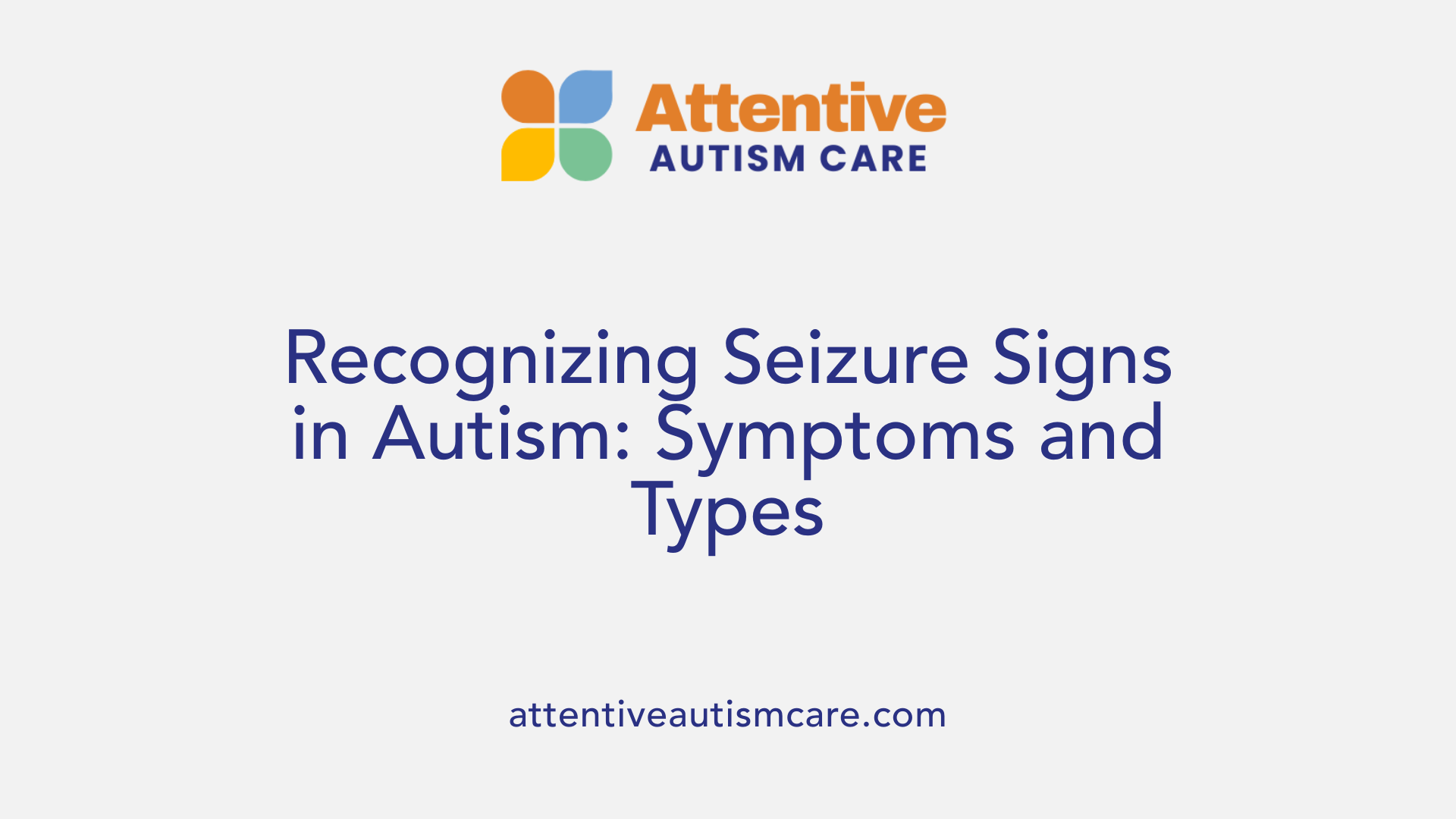
What are the common signs and symptoms of seizures in individuals with autism?
Individuals with autism may display a wide range of seizure signs and symptoms, often overlapping with typical autistic behaviors, which can make detection challenging. Common signs include sudden behavioral changes such as staring spells, confusion, or unresponsiveness. Involuntary movements like jerking, stiffening, or rhythmic twitching, especially in specific parts of the body, are also frequent.
Some children and adults may experience unusual sensations such as tingling, strange smells, tastes, or internal visceral feelings during seizures. Loss of awareness or consciousness, sudden falls, rapid blinking, or automatisms like lip-smacking or hand movements also indicate seizure activity. Basic outward signs might be subtle, especially with focal seizures, making close observation necessary.
Types of seizures
Seizures in autistic individuals can be either focal or generalized. Focal seizures start in a specific part of the brain and may involve automatic movements or sensory changes. Generalized seizures, such as tonic-clonic, absences, or atonic seizures, often involve the entire brain and lead to more widespread symptoms like stiffening or convulsions.
Some common seizure types include:
| Seizure Type | Typical Symptoms | Additional Details |
|---|---|---|
| Focal Onset | Involuntary movements, sensory and emotional changes | Can be impaired awareness (complex partial) or without awareness (simple partial) |
| Absence (Petit Mal) | Staring spells, brief lapses in awareness | Often mistaken for daydreaming or inattention |
| Tonic-Clonic | Stiffening followed by jerking movements | Duration typically 1-3 minutes; often dramatic |
| Atonic | Sudden loss of muscle tone | Can cause falls, risking injuries |
| Myoclonic | Brief shock-like jerks | Often associated with drowsiness or sleep |
Difficulty in recognition
Recognizing seizures in individuals with autism can be complicated because behaviors such as repetitive movements or staring may be normal autistic traits. Some seizures are subtle and do not involve prominent convulsions, such as complex partial or absence seizures. Communication difficulties can prevent individuals from describing their experiences, making caregiver observations vital.
Overlap with autistic behaviors
Certain seizure signs, like behaviors or movements, can resemble autism symptoms, such as stereotyped behaviors or sensory overload. This overlap can delay diagnosis or lead to misinterpretation. Symptoms like loss of balance, unusual sensory experiences, or sudden behavioral changes require careful assessment.
Diagnostic criteria
Diagnosing epilepsy in autistic individuals involves a combination of clinical history, caregiver reports, and diagnostic tests such as EEG and brain imaging. An EEG can reveal epileptiform discharges characteristic of seizure activity, but abnormal EEGs are common in autism without epilepsy. Therefore, the diagnosis relies on correlating EEG findings with observed seizure signs.
In summary, seizures in autism present with diverse signs and can be subtle or overt. Recognition relies on detailed observation, understanding of seizure types, and comprehensive diagnostic evaluation. Early detection and tailored treatment can significantly improve outcomes and quality of life for affected individuals.
Genetic and Biological Pathways Linking Autism and Epilepsy
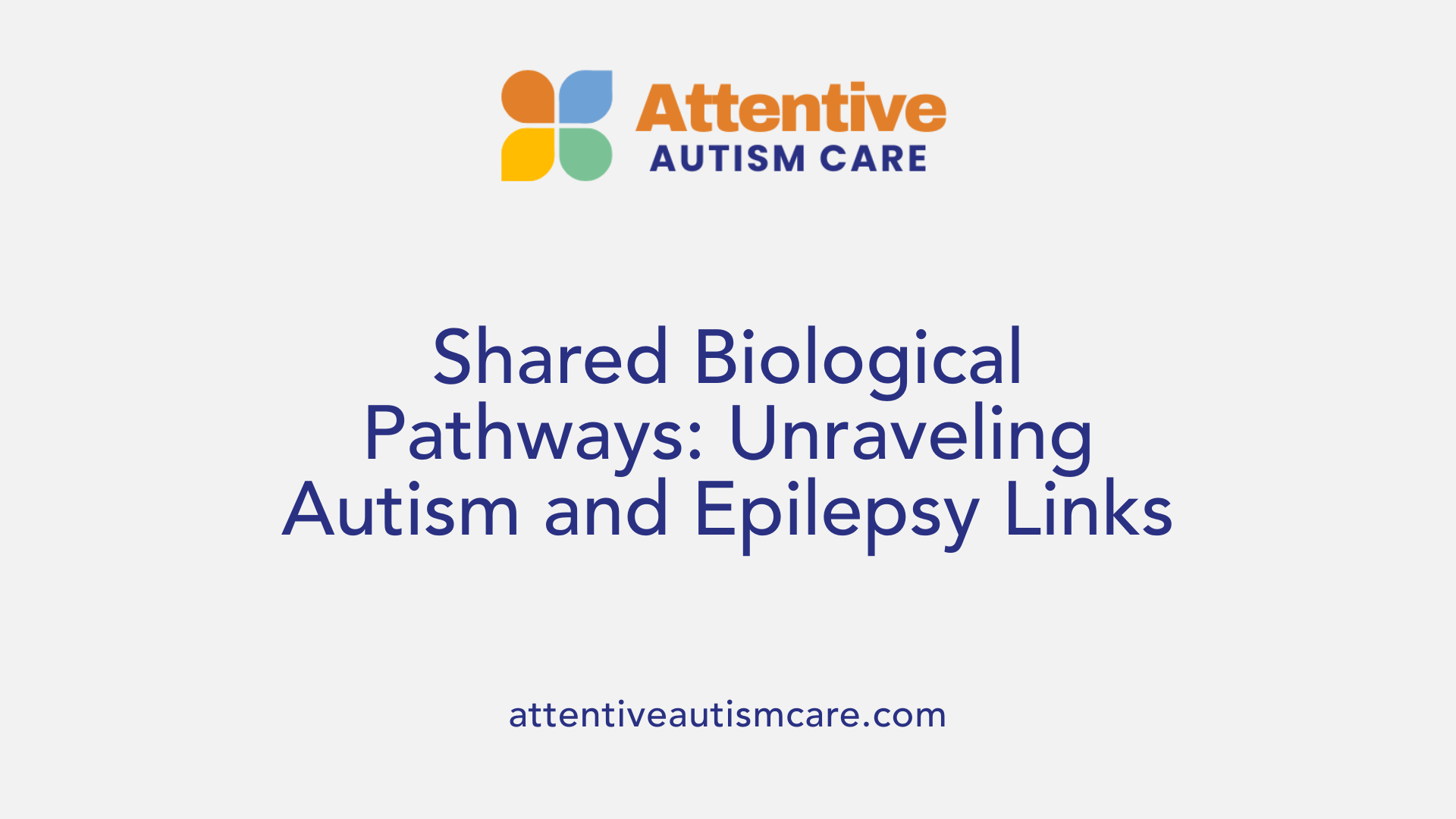 Research indicates that autism spectrum disorder (ASD) and epilepsy are interconnected through complex genetic and neurobiological pathways. Several shared genetic mutations have been identified that influence both conditions. For instance, mutations in genes like SCN2A, which encodes sodium channels involved in neuronal excitability, and TSC1/2, associated with tuberous sclerosis, directly affect neural development and synaptic function.
Research indicates that autism spectrum disorder (ASD) and epilepsy are interconnected through complex genetic and neurobiological pathways. Several shared genetic mutations have been identified that influence both conditions. For instance, mutations in genes like SCN2A, which encodes sodium channels involved in neuronal excitability, and TSC1/2, associated with tuberous sclerosis, directly affect neural development and synaptic function.
Beyond specific genes, disruptions in neurodevelopmental pathways are central to both disorders. These pathways regulate cell growth, differentiation, and synaptic organization—processes vital for healthy brain circuitry. Mutations in MECP2, a gene crucial for gene transcription regulation, can impair neuronal development and lead to abnormal brain connectivity seen in both autism and epilepsy.
Furthermore, abnormalities in neural circuitry, especially involving excitatory and inhibitory balance, are prominent features. Altered GABA receptor expression and minicolumn architecture in the brain can result in heightened neuronal excitability, increasing seizure susceptibility and autistic behaviors.
Synaptic dysfunction is another critical factor. Genes like SHANK3, involved in maintaining synaptic structural integrity, when mutated, disrupt synaptic transmission. This disturbance contributes to the imbalance of neural signaling necessary for normal cognition and sensorimotor integration.
Other biological factors, such as mitochondrial dysfunction and neuroinflammation, also play significant roles. Impaired energy metabolism and immune system dysregulation can exacerbate neuronal instability, further linking the two conditions.
In summary, the association between autism and epilepsy stems from intertwined genetic mutations impacting ion channels, gene transcription, synaptic organization, and neural circuitry, with additional contributions from metabolic and immune-related abnormalities. Understanding these shared pathways offers promising avenues for targeted therapies that address both disorders simultaneously.
Genetic Disorders and Syndromes Associated with Autism and Epilepsy
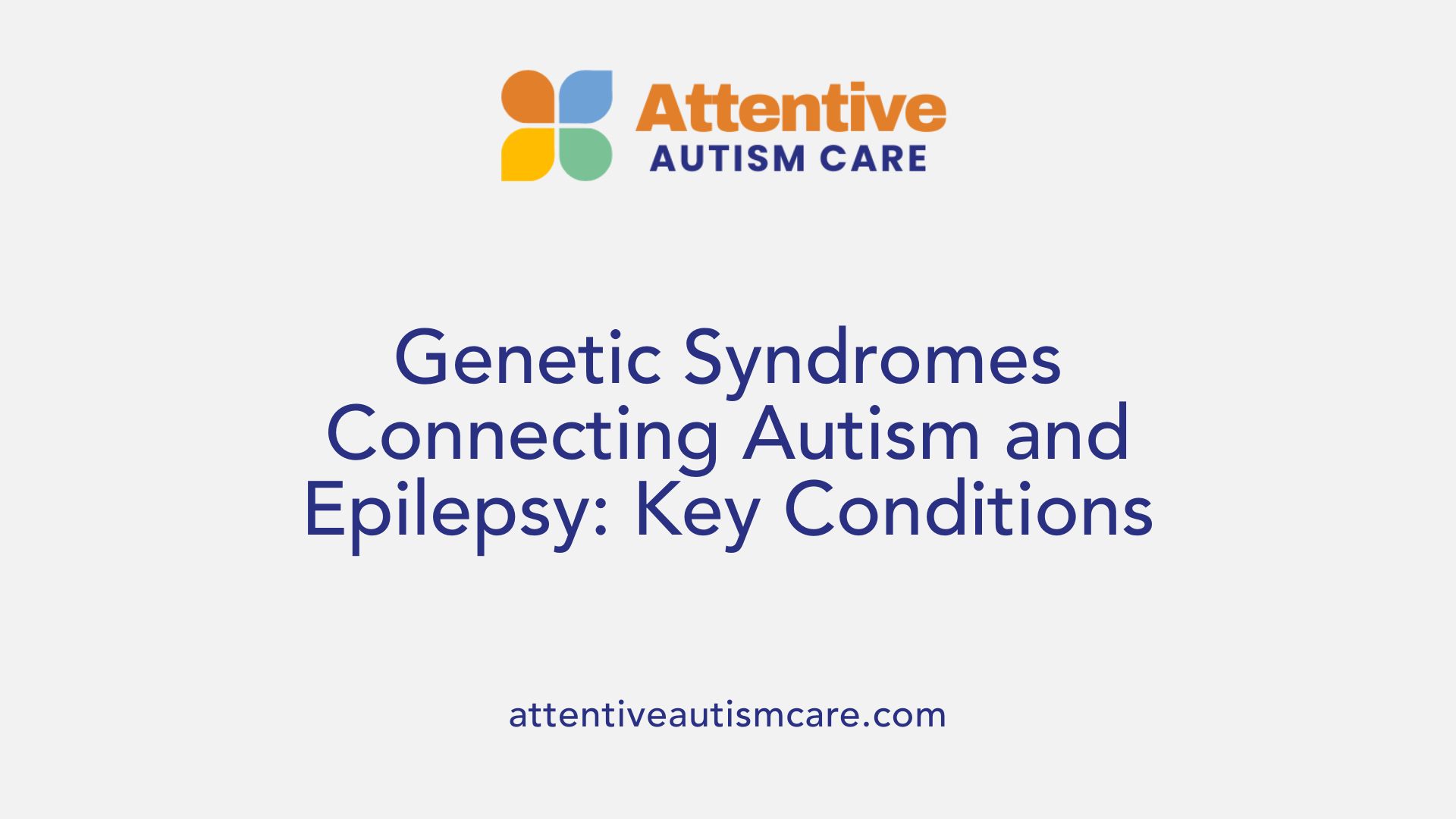 Several genetic syndromes are notably linked to both autism spectrum disorder (ASD) and epilepsy, emphasizing their shared biological foundations. Conditions such as Tuberous Sclerosis Complex, Phelan-McDermid syndrome (caused by deletions of the SHANK3 gene), Fragile X syndrome, Rett syndrome, Angelman syndrome, and Prader-Willi syndrome frequently feature neurodevelopmental issues that encompass both ASD and seizure activity.
Several genetic syndromes are notably linked to both autism spectrum disorder (ASD) and epilepsy, emphasizing their shared biological foundations. Conditions such as Tuberous Sclerosis Complex, Phelan-McDermid syndrome (caused by deletions of the SHANK3 gene), Fragile X syndrome, Rett syndrome, Angelman syndrome, and Prader-Willi syndrome frequently feature neurodevelopmental issues that encompass both ASD and seizure activity.
| Syndrome | Genetic Basis | Clinical Features | Association with Autism and Epilepsy |
|---|---|---|---|
| Tuberous Sclerosis | TSC1 or TSC2 gene mutations | Tumors in multiple organs, developmental delays | Commonly presents with seizures in early childhood and autistic behaviors |
| Fragile X Syndrome | FMR1 gene mutation | Intellectual disability, anxiety, hyperactivity | About 30-50% of individuals have epilepsy; many exhibit autism-like behaviors |
| Rett Syndrome | Mutations in MECP2 gene | Loss of spoken language, motor abnormalities | Autism-like features often precede seizures; seizures are frequent |
| Angelman Syndrome | UBE3A gene mutation or deletion | Severe intellectual disability, happy demeanor | Epilepsy occurs in a high percentage, often with atonic and myoclonic seizures |
| Prader-Willi Syndrome | Deletion or mutation in paternal 15q11-q13 | Obesity, intellectual disability | Seizures are present in some cases; autism traits also observed |
Genetic mutations affecting specific genes involved in neural development and synaptic function are strongly linked to these syndromes. Notably, mutations in genes such as SCN2A, involved in sodium channel functioning, and MECP2, regulating gene transcription, are frequently associated with both conditions. Chromosomal abnormalities like microdeletions or duplications in key regions—including 15q11-q13—are also common underlying factors.
Research findings suggest that these genetic anomalies influence critical neurodevelopmental pathways, especially those regulating synaptic growth and plasticity, cellular signaling, and neural circuit formation. Alterations in these pathways lead to abnormal brain connectivity and imbalance between excitation and inhibition, which are observable in both autism and epilepsy.
Several neurobiological mechanisms tie these syndromes to autism and epilepsy, including disrupted synaptic transmission, cortical dysregulation, and abnormal neural network development. These shared mechanisms explain why individuals with certain genetic syndromes often exhibit both autistic features and seizure disorders.
Understanding the genetic underpinnings of these syndromes not only facilitates diagnosis but also guides targeted treatments. For instance, mTOR inhibitors used in Tuberous Sclerosis show promise in reducing seizures and possibly mitigating some neurodevelopmental symptoms.
In conclusion, the convergence of genetic mutations, chromosomal abnormalities, and their effects on neural pathways underscores the biological connection between autism and epilepsy. Ongoing research continues to unravel these complex interactions, paving the way for more precise interventions and improved outcomes for affected individuals.
For further exploration of these links, searching
Neurodevelopmental Mechanisms and Brain Connectivity
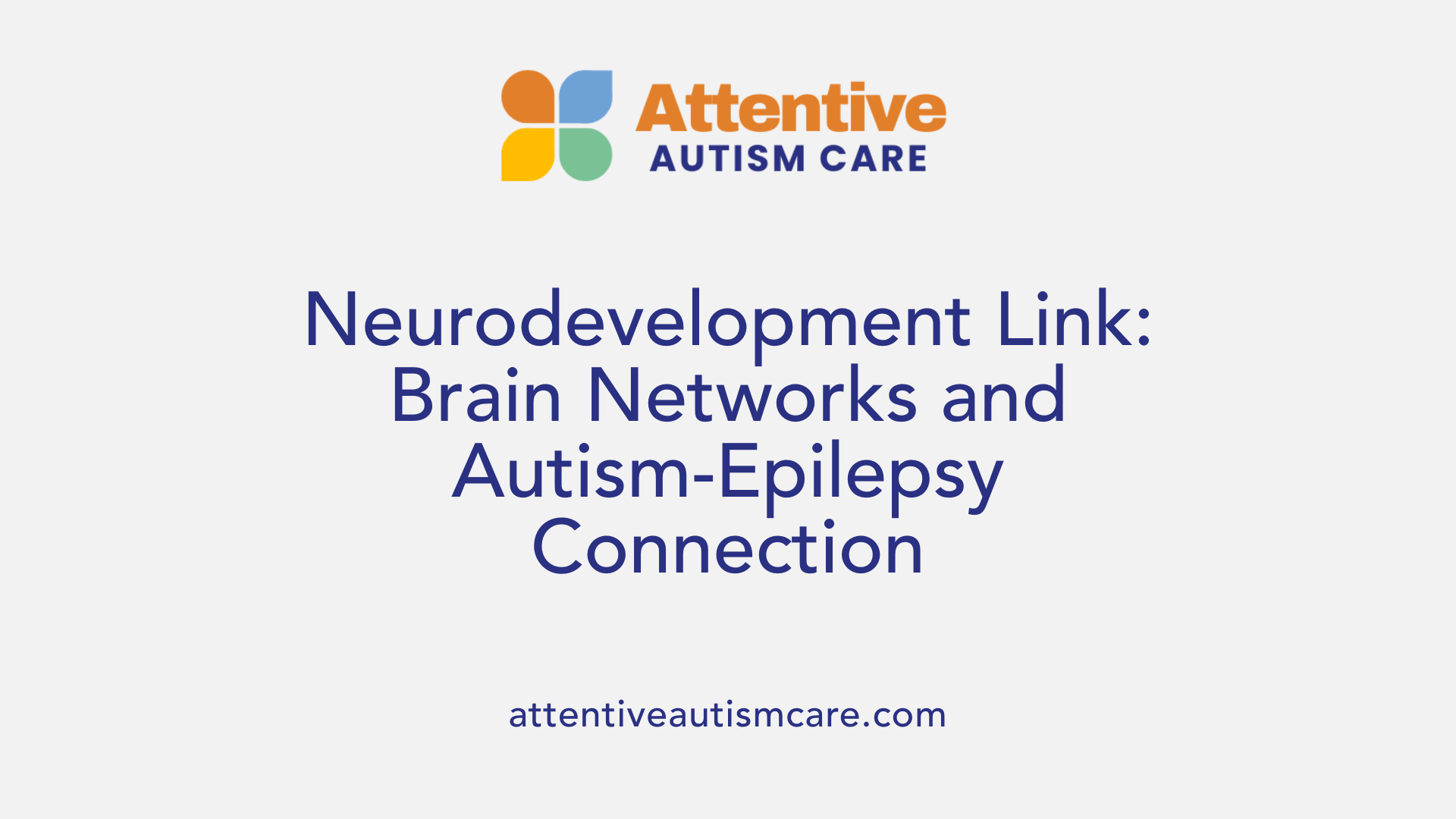
What is the correlation between epilepsy and autism?
There is a well-established connection between epilepsy and autism, with a notable overlap in their occurrence. About 16-25% of individuals with autism also experience epilepsy, and recent research suggests that up to 44% of children with autism are diagnosed with epilepsy, with the reverse also being true.
Children with autism—particularly those with intellectual disabilities—are at increased risk for developing epilepsy. The risk varies: approximately 8% of autistic children without intellectual disability develop epilepsy, but this figure rises to around 20% in those with intellectual impairment, and can be up to 40% in cases of severe intellectual disability.
The relationship is characterized by coexistence rather than causation, meaning that while the conditions often occur together, one does not necessarily cause the other. Instead, they likely share common neurodevelopmental pathways, genetic factors, and brain connectivity abnormalities.
Studies indicate that individuals with epilepsy are also more prone to autism compared to the general population. Both conditions tend to become apparent during childhood, with rates increasing during adolescence and young adulthood. The presence of both disorders can complicate diagnosis and treatment, but recognizing their overlap aids in developing supportive care tailored to individual needs.
Overall, the correlation between autism and epilepsy emphasizes the importance of thorough screening and monitoring, especially in children with neurodevelopmental challenges. Managing this co-occurrence involves a comprehensive approach that considers the shared biological mechanisms underlying both conditions, aiming to improve quality of life through targeted therapies and early intervention.
Impact of Co-occurring Conditions and Management Strategies
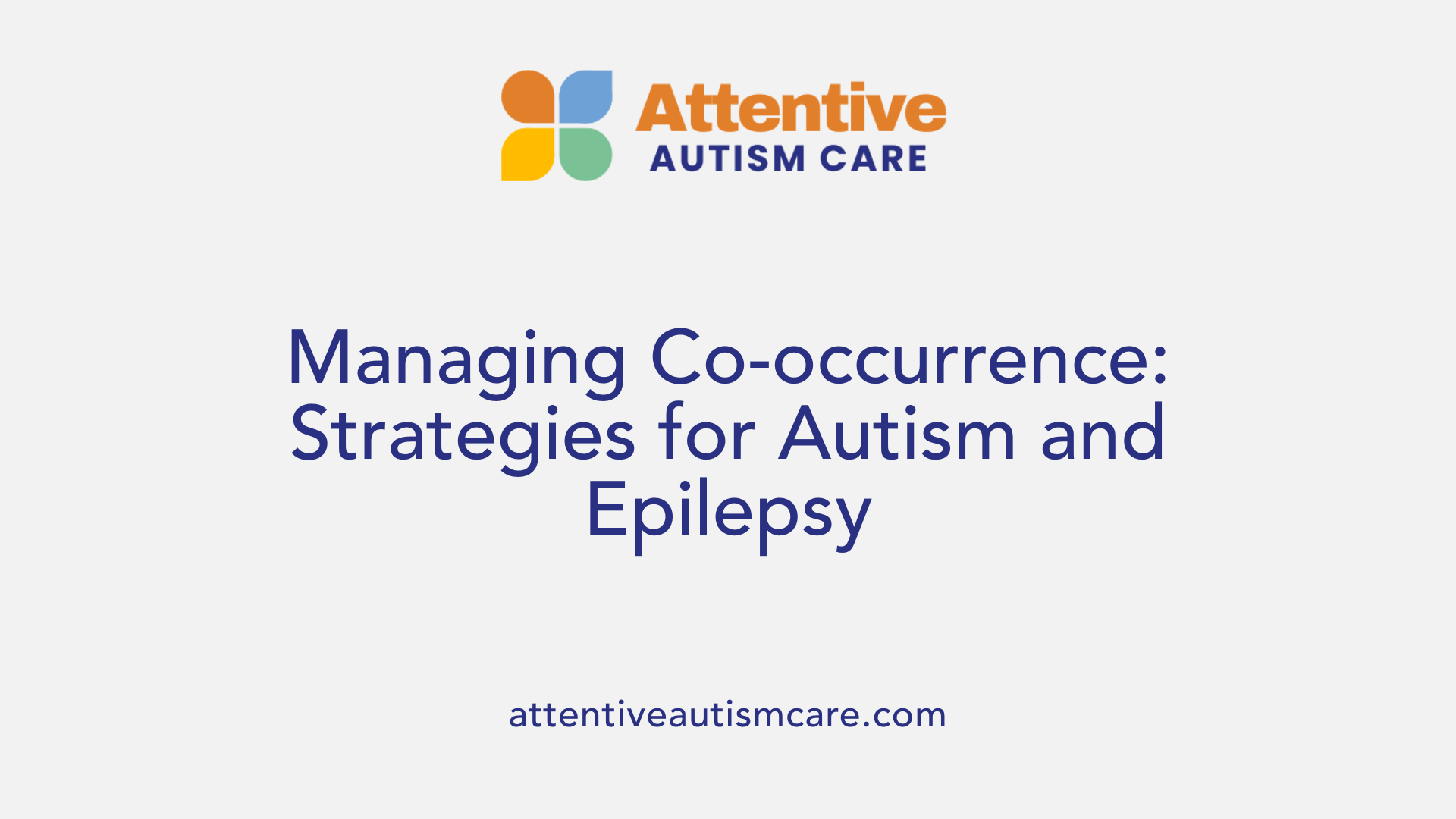
What are the treatment options and management strategies for individuals with both autism and epilepsy?
Managing individuals who experience both autism and epilepsy involves a coordinated, multidisciplinary approach tailored to each person’s needs. The primary goal is to control seizures while also supporting behavioral, social, and cognitive development.
Medication plays a crucial role, with antiepileptic drugs such as valproate, lamotrigine, topiramate, and levetiracetam commonly prescribed. These medications are chosen based on the specific type of seizures, their severity, and the individual's response and tolerability. Regular monitoring is necessary to watch for side effects and potential drug interactions.
Behavioral therapies are equally important. Applied Behavior Analysis (ABA), speech and language therapy, occupational therapy, and social skills training help improve communication, reduce maladaptive behaviors, and enhance daily living skills. These interventions also support ASD symptom management and foster better integration into social environments.
For cases of intractable epilepsy, where medications do not provide sufficient control, surgical options such as resective surgery or neurostimulation therapies like Vagus Nerve Stimulation (VNS) may be considered. These procedures aim to decrease seizure frequency or severity.
Early diagnosis and personalized treatment planning are vital. Continuous assessments and adjustments help optimize developmental progress and improve overall quality of life. Educational support and safety precautions also play a role, especially considering the sensory sensitivities and behavioral overlaps common in autism.
In sum, effective management involves combining pharmacological treatments with behavioral interventions, surgical options when necessary, and ongoing multidisciplinary support to address the complex needs of individuals with both conditions.
Research and Future Perspectives
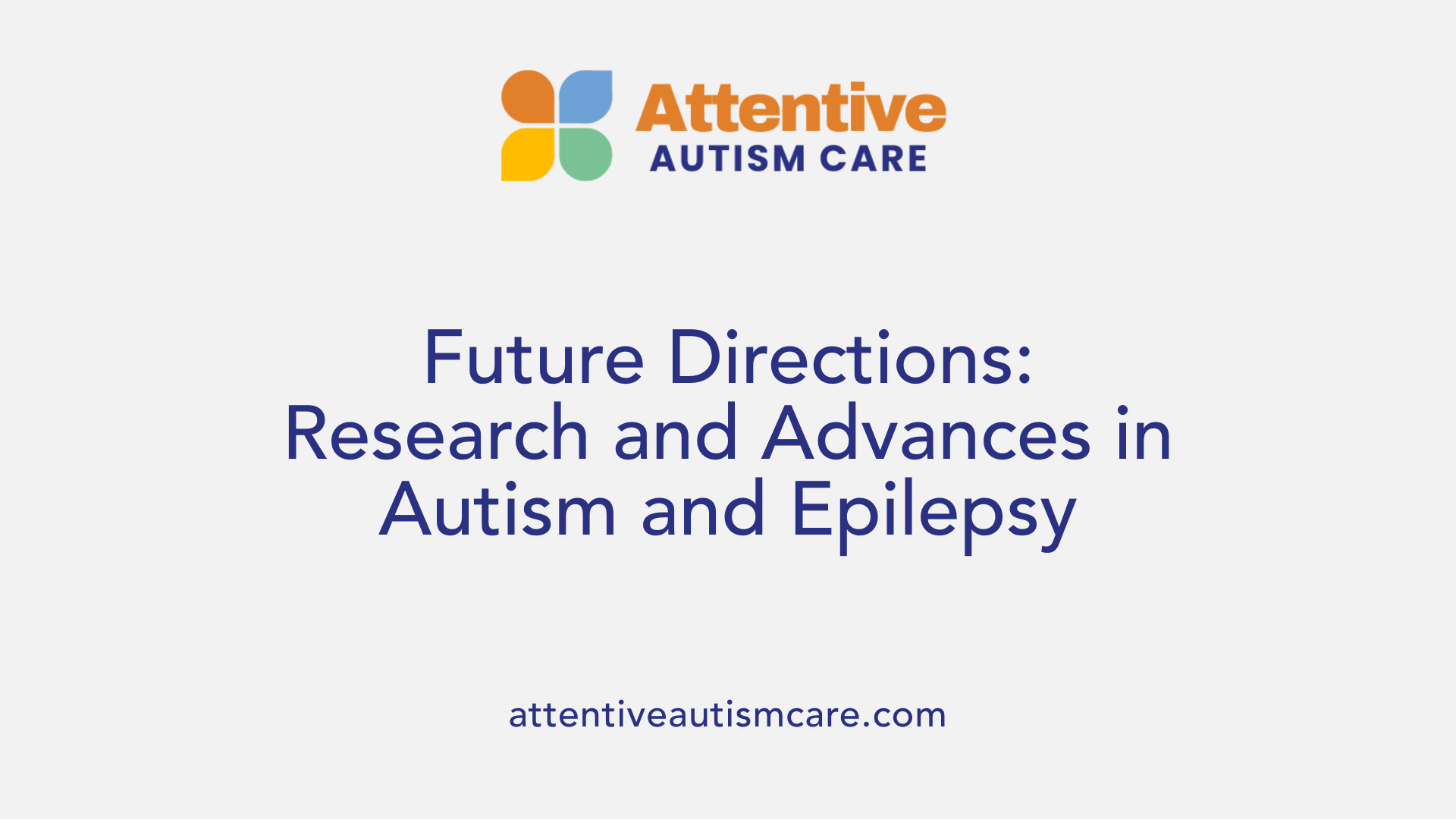
Are there specific research findings that explain the biological links between autism and epilepsy?
Recent research has shed light on the shared biological basis underlying autism and epilepsy. Scientists have identified multiple genetic mutations that influence both conditions, particularly those involved in synaptic function, neural development, and gene regulation. Genes such as SCN2A, MECP2, and TSC1/2 are notable examples.
The neurobiological pathways involved include alterations in synaptic plasticity—the brain's ability to change connections—and imbalances between neural excitation and inhibition, which can lead to hyperexcitability and seizures. Cortical dysregulation, which disrupts normal brain circuitry, also plays a role.
Certain genetic disorders, including Tuberous Sclerosis, Phelan-McDermid syndrome, and Fragile X syndrome, are known to have high rates of co-occurrence with both autism and epilepsy. This points to a shared genetic foundation influencing neurodevelopment.
Environmental factors, especially those affecting brain development early in life, interact with these genetic predispositions. For instance, epileptiform activity during critical developmental windows can influence the presentation of autistic behaviors.
Overall, these findings support the idea that common neurodevelopmental mechanisms—such as disrupted synaptic function and neural circuitry imbalances—contribute to both autism and epilepsy. Understanding these links provides promising avenues for targeted interventions.
Ongoing Studies
Research efforts like the PREVeNT trial are investigating whether early treatment of seizures in infants at high risk—such as those with Tuberous Sclerosis—can improve developmental outcomes and possibly prevent autism. Additionally, large-scale genetic studies and brain imaging research continue to explore how specific pathways influence both disorders.
Preventative Strategies
Early detection of abnormal brain activity through EEG screening in at-risk children may enable earlier intervention, potentially reducing severity. Interventions targeting excitatory-inhibitory balance during critical periods of development are under investigation as ways to prevent or diminish both epilepsy and autism features.
Genetic Testing
Advanced genetic testing, including chromosomal microarrays and whole exome sequencing, is crucial in identifying mutations linked to both conditions. Resources like the SPARK study offer accessible options for genetic analysis, which can inform personalized treatment plans.
Personalized Medicine
Tailoring therapies based on an individual’s genetic and neurobiological profile is an emerging focus. Such personalized approaches aim to maximize efficacy and minimize side effects of medications, especially for co-occurring autism and epilepsy.
Animal Models
Animal studies, including rodent models, are vital for understanding the developmental mechanisms underlying both autism and epilepsy. Experiments exposing animals to prenatal stress or environmental toxins like terbutaline help elucidate how different factors influence the development of these conditions and test potential interventions.
Understanding the complex interplay of genetics, neurobiology, and environment will be essential for developing effective prevention and treatment strategies for individuals affected by both autism and epilepsy.
Towards Better Understanding and Care
The intricate relationship between autism and epilepsy underscores the importance of early identification, comprehensive evaluation, and personalized management strategies. Advances in genetic and neurobiological research continue to shed light on shared pathways, fostering hope for targeted interventions and improved outcomes. A multidisciplinary approach that combines medical treatment, behavioral therapies, and support systems is essential in addressing the complex needs of individuals with co-occurring autism and epilepsy. Continued research and awareness are vital to unraveling the biological mechanisms and developing preventative strategies, ultimately aiming for enhanced quality of life and functional independence for affected individuals.
References
- Epilepsy and Autism: Is There a Relationship?
- Epilepsy and autism - National Autistic Society
- Autism Spectrum Disorder and Epilepsy
- The link between epilepsy and autism, explained | The Transmitter
- Epilepsy in patients with autism: links, risks and treatment challenges
- Epilepsy and autism | Autistica
- Epilepsy and Autism - Practical Neurology
- Autism and Epilepsy: What You Need to Know If They Occur Together
- The Connection Between Stress, Autism, and Epilepsy
- Epilepsy and autism | Autism Awareness Australia




































































































